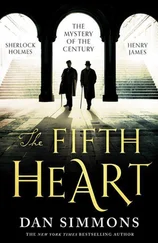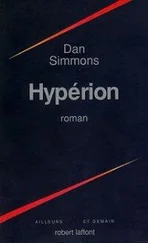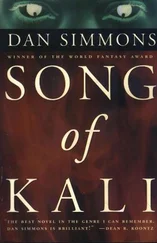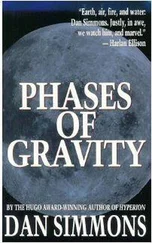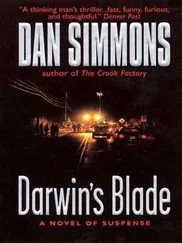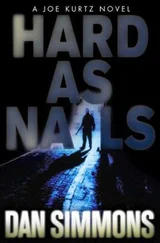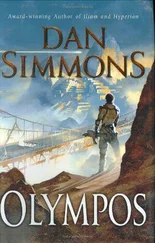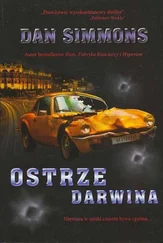In the summer, the workers are expected to be at work at 7 a.m. (7:30 in the winter), but Paha Sapa and the other powdermen are usually there by 6:30, since they have to start early in preparing the dynamite charges that will soon be placed in holes being drilled that morning. The first blow of the day will be at noon, while the drillers are off the face having lunch. Paha Sapa knows that “Whiskey Art” Johnson is already up there with his assistant, cutting the dynamite into smaller segments—sixty or seventy short sticks for each shot—and that Paha Sapa’s assistant will be there soon.
Reaching the halfway point on the 506 steps, Paha Sapa looks up at the three heads.
It has been a productive year so far, with more than 15,000 tons of granite removed—enough to pave a four-acre field with granite blocks a foot thick. Much of that rubble came from Washington’s chest, which is taking shape nicely, but they’ve also cleared out many tons from beneath Jefferson’s chin (where he now takes shape in his new spot to Washington’s left, looking out from the Monument) and in roughing out Abraham Lincoln’s forehead, eyebrows, and nose.
The majority of the rubble, though, came from the frenzied work on Thomas Jefferson’s face, which Borglum is rushing to get ready for a possible visit and dedication in late August by no less than President Franklin Delano Roosevelt.
The presidential visit has been rumored for months, but now it seems certain to happen in just over a week—on Sunday, August 30.
Still climbing with the heavy box on his shoulder, Paha Sapa wonders if this should be the time for him to act.
Paha Sapa has no wish to harm President Roosevelt, but he still has every intention of blowing the other three presidents’ heads off the face of the Six Grandfathers. And would it be more symbolic, somehow, if he eradicated these wasichu excresences while the president of the United States sat in his open touring car below?
Paha Sapa knows that Borglum is planning a symbolic blasting as part of President Roosevelt’s dedication ceremony. His son, Lincoln, has already been directed to find the best way to drape the huge American flag, now in storage, over Jefferson’s face, the flag to be swung to one side by the long boom of the pointing machine atop the heads. There is to be a reviewing stand for dignitaries behind where Roosevelt’s car will be parked, and live radio microphones and half a dozen newsreel cameras grinding. If Paha Sapa is successful in triggering charges on all three of the heads that Sunday, no one will be hurt, but the entire world will watch in movie theater newsreels the final destruction of the three heads on what would have been the Monument on Mount Rushmore.
Three heads.
There is part of the problem. Paha Sapa knows all too well Gutzon Borglum’s plan for four heads up there, the last one being that of Theodore Roosevelt, tucked in between Jefferson and Lincoln. The stone experts are already drilling and coring to confirm that the granite there will be of adequate quality for the carving, and though many have protested Borglum’s putting so recent a president up there—and another Republican to boot—Paha Sapa knows how stubborn Borglum is. If the sculptor lives (and perhaps even if he does not, with Lincoln taking over), there will be a Teddy Roosevelt head on Mount Rushmore.
Paha Sapa’s Vision was of four wasichu Great Stone Heads rising out of the Six Grandfathers, four giant stone wasichus shrugging off the soil and trees of the Paha Sapa, and four of these terrible giants looking out and over the destruction of Paha Sapa’s people and of the buffalo and of the Natural Free Human Beings’ way of life.
Does he not have to destroy all four heads to keep this Vision from coming true?
More to the point, Paha Sapa realizes as he approaches the final flights of steps, does he now have time to wait for that fourth head to be carved?
The doctor in Casper said no. A few months , the white-haired doctor said solemnly but with no emotion, just another old Indian sitting on his examining table, perhaps a year if you’re unlucky.
Paha Sapa understood that the “unlucky” referred to the pain and immobilization and incontinence this form of cancer would give him if the dying dragged on.

PAHA SAPA PASSES the wooden landing with a flat bit of graveled soil between the boulders where the men ambushed him each morning for weeks after he was first hired by Borglum five years earlier.
To their credit, they never attacked him all at once. Each morning they’d have another champion to beat the old Indian into submission, to beat him so badly that he would have to quit. One of the larger, more violent miners in the early attacks.
And each morning, Paha Sapa refused to be beaten into submission. He fought back fiercely, with fists and jabs and head butts and kicks to the bigger man’s balls when he could. He sometimes won. More often he lost. But he always took a toll on his assailant, morning after morning. And he was never beaten so badly by the white men’s single champion that he—Paha Sapa—could not lift his drill or crate of explosives and helmet and gear and continue the painful climb toward the powder shack, where he would begin work. And though they broke his nose and blackened his eyes and pulped his lips over those weeks, they never managed to disfigure his face so much that he couldn’t don the filtration mask and go to work.
Finally, Borglum noticed and called all the men together in a meeting outside his studio on Doane Mountain opposite the work site.
— What the goddamned hell is going on?
Silence from the men. Borglum’s usual roar of a voice became an even louder roar, drowning out the compressor that had just started up.
— I’m goddamned serious. I’ve got a powderman who is obviously getting the excrement beaten out of him every day and two dozen other workers with missing teeth and rearranged noses. Now, I need to know what the goddamned hell is going on and I’ll know it right now. There are thousands of miners and workmen and powdermen out of work, right here in South Dakota, who’ll take your jobs in a fast minute, and I’m about fifteen seconds away from giving those jobs to them.
The answer, such as it was, came from someone deep in the press of men.
— It’s the Indian.
— WHAT?
Borglum’s roar this time was so loud that the compressor actually stopped, the operator—the only man not at the meeting—obviously thinking that the machinery had seized up.
— What goddamned Indian? Do you think I’d hire an Indian for this job?
The question was answered by silence and a sullen shuffling.
— Well, you’re goddamned RIGHT I’d hire an Indian if he was the best man for the job—or a nigger, if it came to that—but Billy Slovak is no damned Indian!
Howdy Peterson stepped forward.
— Mr. Borglum… sir. His name ain’t Billy Slovak. On the lists up at the Homestake, and the Holy Terror Mine before that, they had him down as Billy Slow Horse… sir. And he… he looks like an Indian, Mr. Borglum, sir.
Borglum shook his head as if as much in pity as disgust.
— Goddamn it, Peterson. Are you all Norwegian or did a little coon or Cheyenne or wop sneak in there? And who the hell CARES? This man I hired is named Billy Slovak—part Czech or Bohunk or whatever the hell it is, and why should I care?—and he was CHIEF POWDERMAN at the goddamned Homestake Mine when I hired him. Do you know how long powdermen usually last at the Homestake—much less at that Hell Pit that was the Holy Terror? Three months. Three… goddamned… months. Then they either blow themselves up, and half a crew with them, or become total alkies or just lose their nerve and go hunt for work elsewhere. Billy Slovak—and that is his NAME, gentlemen—worked there eleven years without losing his nerve or ever hurting another man or piece of equipment.
Читать дальше


